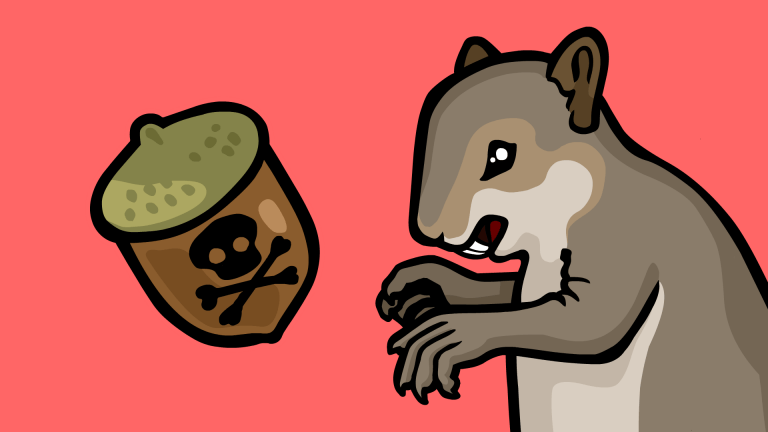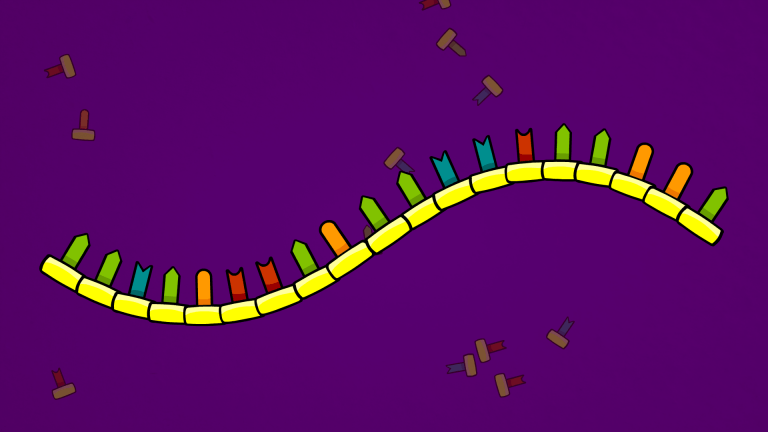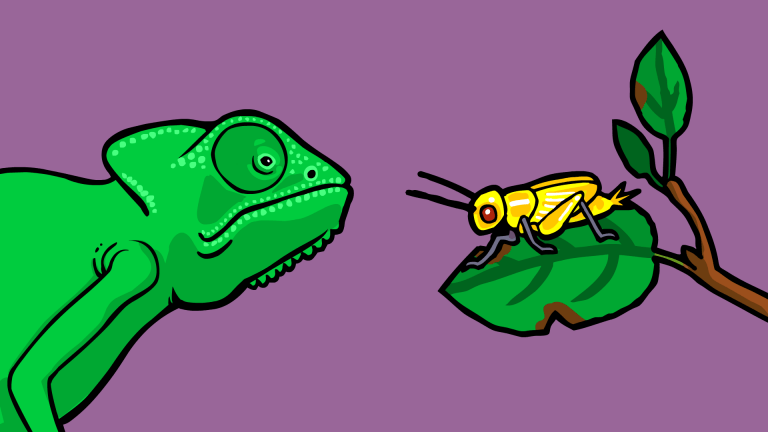Overview
Lichen is a combination of algae and fungus living together. This relationship allows them to survive in locations they could never live on their own.
If evolution is all about “survival of the fittest”, how does cooperation evolve? Living things form cooperative relationships all the time. Research done by applying mathematics to biology is helping us understand the evolution of cooperation. Cooperation has caused some of the major evolutionary steps in the history of life, including the step from single celled creatures to multi-cellular plants and animals.
Scientists used mathematical models to find scenarios in which natural selection will actually favor cooperation.
For Teachers
The content of this video meets criteria in the following Disciplinary Core Ideas defined by Next Generation Science Standards. Use our videos to supplement classroom curriculum.
Contributors
Our videos benefit from guidance and advice provided by experts in science and education. This animation is the result of collaboration between the following scientists, educators, and our team of creatives.
Team
- Jon Perry
- Anthony Danzl
- Rosemary Mosco
Sources
- Many species of fungus feed on lichen (paper)
- Kin selection combined with budding can give rise to cooperation (paper)
- Math of kin Selection (paper)
- Math of Direct Reciprocation (paper)
- Math of Indirect Reciprocation (paper)
- Math of Network Reciprocation (paper)
Transcript
How does cooperation evolve?
Usually when we think of natural selection, we think of competition. Survival of the fittest! Competition is fierce in nature, but almost everywhere we look, we also see examples of cooperation.
When two or more different species cooperate to make a living, scientists call it mutualism.
One of the craziest examples of mutualism can be seen in lichen- those crusty things you often find growing on rocks and tree bark.
Lichen is a combination of fungus and algae—two completely unrelated organisms, working together as one. This cooperation is unexpected because many species of fungus eat and kill algae. They have special tentacles called haustoria that pierce the cell walls of their victims, acting like straws to slurp out a meal.
In lichen, however, the fungus uses its large body to collect moisture and vitamins from the environment which it gives to the algae. In return, the algae uses photosynthesis to produce food that the fungus slowly eats, being careful not to injure or take too much from the algae.
In hindsight, it’s easy to see that this relationship gives both creatures a survival advantage, allowing them to thrive in places they could never dream about living on their own, but how do relationships like this first get started?
If we imagine an environment with plenty of algae to eat, it seems at first glance that natural selection can only favor fungi with mutations that allow them to eat fast and multiply quickly. Slower, gentler fungi will always lose the competition, making it impossible for cooperation to evolve.
By modeling natural selection mathematically however, scientists have discovered many situations that actually promote the evolution of cooperation.
For example, in environments with small patches of slow growing algae, fast eaters will still out-compete slow eaters if they happen to find themselves on a the same patch of food, but once the algae is gone, fast eaters starve.
When slow eaters happen to find patches that fast eaters haven’t yet found, the simple fact that they’re slow gives their food more time to reproduce, sometimes even forming bridges to new fresh patches of algae that nobody else has access to. In this scenario, natural selection actually favors the nice guy.
Survival of the slowest!
If a mutation crops up in a fungus making it so slow at feeding that individual algae can actually grow and reproduce while being eaten, this fungus will never run out of food.
Like a farmer that gets more fruit from her trees by tending to their needs, from this point on, any mutation in the fungus that helps serve the algae, allowing it to grow faster and stronger, will also help the fungus.
So to sum things up, even though natural selection often forces living things into brutal competition, scientists have discovered many situations in which nature favors cooperation. Even transforming savage parasites into gentle, caring hosts.
These relationships develop, not because individuals decide to work together, but because circumstances of the environment naturally select for cooperation.





